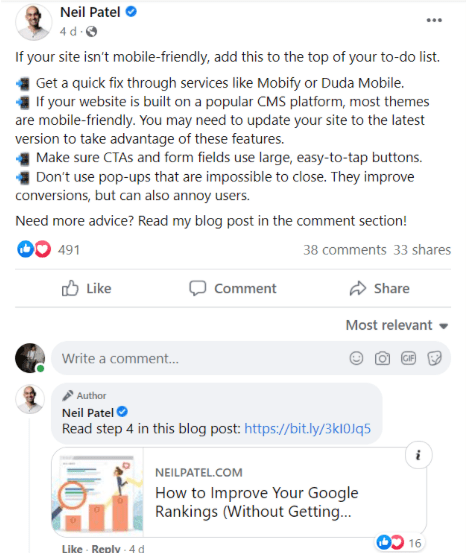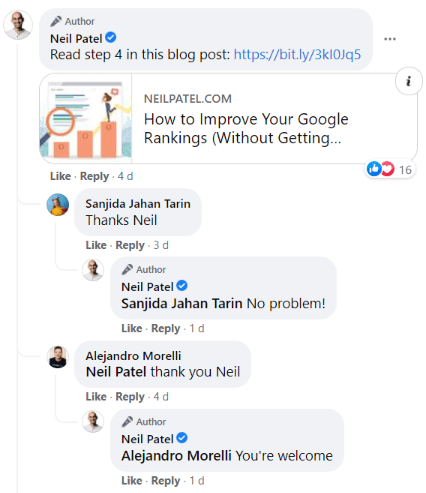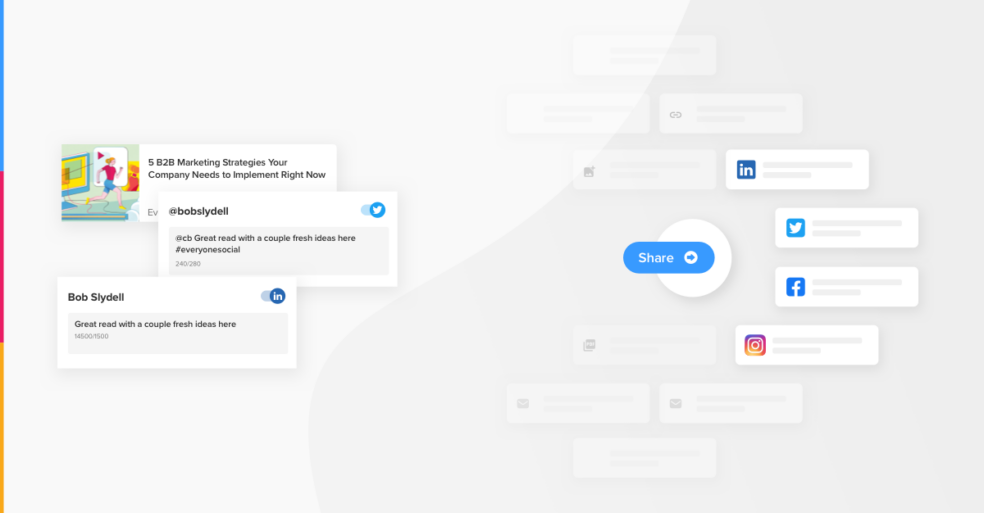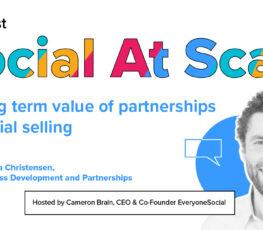Social media marketing has evolved greatly over the years — from paid ads and sponsored posts to native content and influencer marketing. And now, there’s inbound social selling.
Arguably, inbound social selling is a lot more effective than some other, more “traditional” social media marketing techniques.
Today, we’ll take a look at how exactly inbound social selling works and why. But first, we need to understand what inbound social selling is in the first place.
What is Social Selling the Inbound Way?
As you might have guessed from the name, social selling is the process of making sales, through social media. The word “inbound” means that prospects come to you.
Here are a few examples of inbound social selling:
- A prospective customer comments on your LinkedIn post or replies to your tweet
- A lead asks you a question on social media
- A prospect regularly engages with you and your content
Sounds like a salesperson’s dream, doesn’t it? People actually coming to you for your product or service?
Of course, in reality, it’s not as simple as the definition makes it seem.
The key is creating quality content.
Besides looking at memes and cooking videos, people also use social media as a tool for research. They look for answers to their questions, join groups of similarly minded people that can guide them and make recommendations, and, of course, find products that address their needs.
In fact, more than 90% of B2B buyers and more than 80% of senior executives conduct research on social media before making purchasing decisions.
The job of inbound social sellers is to engage people on a human level while delivering content that solves their problems.
Because social media is so widely accessible and easy to use, it’s the perfect platform for these kinds of engagements. Plus, it allows you to show your human side, convey your message at the right time, and establish yourself as knowledgeable about a particular topic.
As commonly stated in the sales world: if a person likes you, they’ll listen to what you have to say. But if they trust you, they’ll buy from you.
Inbound social sellers make sure they are both liked and trusted.
How Exactly Does Inbound Social Selling Work?
Let’s imagine that you’re starting your first day as an inbound social seller. What would you do?
Establish a social media presence.
The first thing is to set up accounts on all of the social media platforms that your audience is most active on. This varies depending on your industry, but chances are you’ll look at Facebook, LinkedIn, and Instagram.
You’ll need to create strong, professional profiles with a professional photo and bio + lots of relevant content. Human content, that is — not marketing throughout.
Here’s a detailed guide on how to optimize your profiles for social selling.
Engage in groups and discussions with your audience.
The next step is to figure out which groups your audience is active in and what topics they frequently discuss.
Once you’ve identified these groups, join them and chime in.
Actively participate in discussions, and if someone asks a question you can easily answer, go for it! This will help you establish thought leadership while engaging with your audience directly.
You can also host livestreaming sessions with your audience on Facebook, YouTube, or other livestreaming platforms, and engage with your followers in real time.
This allows you to show your human side — after all, it’s no secret that people hate when someone is obviously trying to sell to them.
Your followers will be more receptive to your products or services if you speak to them on a personal level and provide them with solid advice, instead of just spamming them with your own self-promotion.
Think of social selling like having a more consultative approach: try to help first and foremost, not sell.
That’s how you win people’s trust.
Share quality content.
In addition to participating in groups, you also need to consistently share helpful content on your own page.
It doesn’t all have to be your personally created content — much of it can actually be curated — but at least 20% should be your own because this establishes you as a thought leader.
Again, this content shouldn’t be all about your product or service. Some certainly can, but also share non-product-related posts such as articles you enjoyed, personal wins and updates, and more.
There are tons of different content formats that can bring value to your readers. Here are a few:
- Blog posts
- Customer stories
- Infographics
- Whitepapers
- Ebooks
- Case studies
- Webinars
- Podcasts
- Video
Engage with users.
The people who like and comment on your posts are prime prospects because they’re already engaging with your content. This shows you that they likely view your content as helpful or informative.
You can further interact with these prospects by engaging with their posts or even striking up a conversation in the comments section or via direct message.
Don’t get discouraged if your efforts don’t immediately lead to a sale — a decent conversion rate for this is around 10%, which is still a lot higher than your average cold sales pitch.
Of course, when it comes to social selling the inbound way, the ideal situation is for a prospective customer to message you.
However, this takes time because building relationships takes time. You need to establish yourself as a thought leader, provide value to your audience, and win their trust.
Listen instead of sell.
As an inbound social sales representative, your job is not to push out as many sales pitches as you can.
Don’t bombard your prospects with sales pitches as soon as they like your post or accept your connection request — this is the opposite of effective inbound social selling.
Remember: You’re here to help people with their problems and guide them toward the best purchasing decisions in a way that feels like friendly advice, not cold sales.
Be their friend rather than a sales representative and people will come to you asking for your product.
Be authentic.
It is important to have a distinct personality that’s associated with your brand. Witty, funny, helpful — all these qualities are amazing to have when you’re social selling.
However, if you have to force yourself to try and be someone you really aren’t in real life, people will notice. And people really don’t like it when brands try to seem like regular everyday people to sell them something.
So be yourself, and communicate with people the way you would talk with them in real life.
Avoid opinionated discussions.
There’s one thing that you can’t take away from social media, and that’s opinions.
People will openly express their thoughts and feelings toward certain brands — including yours — and they won’t always be positive.
It’s okay to engage with people who have concerns or complaints about your product or service, but do so with caution. Ask what you can do to help or simply refer them to your customer success team.
Inbound Social Selling Examples
Let’s take a look at what social selling the inbound way looks like in practice.
Dollar Shave Club
Dollar Shave Club has been popping up quite a lot lately with their influencer marketing campaigns. But their social media page is also a goldmine for both memes and shaving advice, and engaging with followers is a great example of the basics of social selling.
Take this post, for example.

It’s just some quick tips about what kinds of beard styles work best with different face shapes. However, it might be the post that encourages a person to order their set of razors and experiment with their style a little bit.
Neil Patel
Patel does a very good job at maintaining his Facebook page. He regularly posts helpful advice, creates video series, and engages with users in the comments — he does it all.

The post itself is just a few tips to make your website user-friendly. However, in the comments, Neil includes a link to one of his blog posts and engages with every single person that replies or raises a question.

He’s not trying to sell anything — he simply aims to help. This builds a closer relationship with his followers so that when he does try to sell something, people are much more receptive to it.
EveryoneSocial
Social selling the inbound way is all about showing the value of your product without pushing it, which is exactly what Enterprise Sales Director Maik Kannenberg does in this LinkedIn post.

Here, he highlights the positive impact that EveryoneSocial has, mentions big-name customers as a bit of social proof, and invites his followers to talk to him about how he can help them.
Why Does Inbound Social Selling Work?
People typically loathe salespersons trying to blatantly sell them something, so why does inbound social selling work?
Because the focus isn’t on raking in as many sales as possible in the shortest amount of time. Instead, it’s about the following:
- Establishing yourself as a thought leader within your niche
- Engaging in social discussions like fellow enthusiasts
- Actively helping people instead of shoving your product in their face
- Providing quality, helpful content that brings people to you
Essentially, inbound social selling works because inbound sellers are viewed as influencers within their industry rather than traditional salespeople.
















